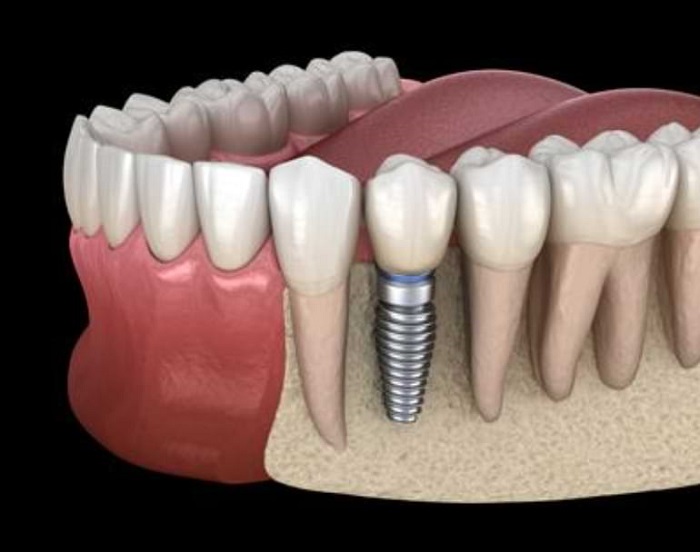Understanding the Different Types of Dental Implants

Dental implants have revolutionised the field of dentistry, offering a reliable and aesthetically pleasing solution for tooth replacement. As a practice providing dental implants in St John’s Wood, we at Aura Dental take pride in providing a comprehensive range of dental services, including an array of implant options tailored to meet diverse patient needs.
From single tooth implants to full arch restorations, our expert team is dedicated to enhancing both oral health and personal confidence through cutting-edge treatments. In this post, we’ll delve into the various types of dental implants available, highlighting their unique benefits and how they can transform your smile. Discover the transformative power of modern dental care and why choosing the right implant can be a life-changing decision.
Overview of Dental Implants
Dental implants are a revolutionary solution for tooth replacement. Let’s explore what they are and the benefits they offer.
What Are Dental Implants?
Dental implants are artificial tooth roots surgically placed into the jawbone to support replacement teeth. These titanium posts act as a sturdy foundation for crowns, bridges, or dentures.
The implant process typically involves three components: the implant itself, an abutment, and the prosthetic tooth. This structure mimics natural teeth, providing both function and aesthetics.
Implants integrate with the jawbone through a process called osseointegration, ensuring long-term stability and comfort. This unique feature sets them apart from other tooth replacement options.
Benefits of Dental Implants
Dental implants offer numerous advantages over traditional tooth replacement methods:
- Improved appearance: They look and feel like natural teeth, enhancing your smile.
- Better speech: Unlike ill-fitting dentures, implants allow you to speak without worry.
- Comfortable eating: They function like your own teeth, allowing you to eat your favourite foods with confidence.
Long-term oral health is another significant benefit. Implants don’t require reducing other teeth, as a tooth-supported bridge does. This preserves more of your natural tooth structure.
Additionally, implants stimulate bone growth, preventing the bone loss that often occurs with missing teeth. This helps maintain facial structure and a youthful appearance.
Types of Dental Implants
Dental implants come in various types, each suited to different patient needs. Let’s explore the two main categories: endosteal and subperiosteal implants.
Endosteal Implants Explained
Endosteal implants are the most common type of dental implant. These are placed directly into the jawbone and are typically shaped like small screws, cylinders, or plates.
The process of getting endosteal implants usually involves three steps:
- Implant placement into the jawbone
- Healing period for osseointegration
- Attachment of the artificial tooth
Endosteal implants are ideal for patients with a healthy, adequate jawbone. They provide a strong, stable foundation for single teeth, bridges, or even full dentures.
Success rates for endosteal implants are high, typically over 95% when properly cared for. This makes them a reliable, long-term solution for tooth replacement.
Understanding Subperiosteal Implants
Subperiosteal implants offer an alternative for patients who lack sufficient healthy jawbone and can’t, or don’t want to, undergo a bone augmentation procedure.
These implants are placed on or above the jawbone, but under the gum tissue. A metal framework with posts protrudes through the gums to hold the prosthetic teeth.
Subperiosteal implants are less common than endosteal implants but can be an excellent option for certain patients. They’re particularly useful for those who have worn conventional dentures for a long time and experienced significant bone loss.
The procedure for subperiosteal implants is generally less invasive than that for endosteal implants, which can be advantageous for some patients.
Choosing the Right Implant
Selecting the appropriate implant type is crucial for successful tooth replacement. Let’s consider the key factors and the consultation process at Aura Dental.
Factors to Consider
When deciding on the right dental implant, several factors come into play:
- Bone density and volume: This determines whether you’re a candidate for endosteal implants or if subperiosteal implants might be more suitable.
- Overall oral health: Any existing dental issues may need to be addressed before implant placement.
- Number of teeth to be replaced: This can influence whether individual implants or an implant-supported bridge or denture is more appropriate.
Your lifestyle and habits also play a role. For instance, smoking can affect implant success rates and may influence the choice of implant type.
Cost is another consideration, as different implant types and procedures vary in price. However, it’s important to view implants as a long-term investment in your oral health and quality of life.
Consultation Process at Aura Dental
At Aura Dental, we offer a comprehensive consultation process to determine the best implant solution for you:
- Initial assessment: We evaluate your oral health, bone structure, and overall medical history.
- Imaging: Advanced 3D scans provide detailed images of your jaw structure.
- Treatment planning: We discuss your options and create a personalised treatment plan.
Our expert team takes the time to explain each step of the process, ensuring you’re fully informed and comfortable with your choice.
“Our goal is to provide not just a new tooth, but a renewed sense of confidence and well-being,” says Dr. Ilaria, lead implant Dentist at Aura Dental.
We encourage patients to ask questions and express any concerns during the consultation. This open dialogue helps us tailor the treatment to your specific needs and expectations.










